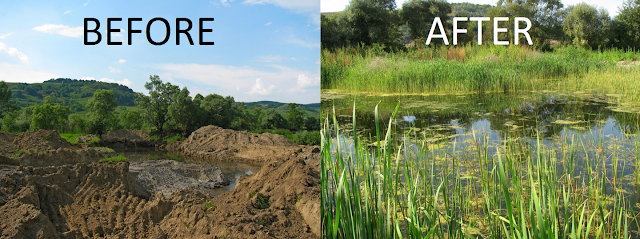"Gray is a cool, neutral, and balanced color. The color gray is an emotionless, moody color that is typically associated with meanings of dull, dirty, and dingy, as well as formal, conservative, and sophisticated. The color gray is a timeless and practical color that is often associated with loss or depression."
Bourn Creative: Meaning of the Coloer Grey
 |
| Image - Texas A&M AgriLife Research & Extension Center at Uvalde |
 |
| Agave neomexicana - image, Grootscholten |
Growing up in San Diego county, I was surrounded by adults, many of whom came from the midwest. Their midwest biased choices for landscapes were predominently massive lawns, a few trees, some flower beds, but mainly their choices were based on preferences of rich greens like the environments they were transplanted from. I can relate. I grew up around a much more rugged landscape of drier Mediterranean chaparral & desert ecosystems. Hence the patterns and colour schemes regarding my preferences in landscaping are a puzzle over here to most Swedes who no doubt would relate to people from the eastern United States. Take the photo above of the Texas A&M research station. Most people in a Retail Nursery in California will still prefer plants which offer the most brilliant of greens over greys if given a choice. Very few would choose what they would consider the dull grey-blue New Mexico Agave seen above right. But I think mainly it's a lack of ability of visualizing such a specimen in the correct location and with the perfect companion plant which can offer accented colour hightlights which can bring out the richest most effective colour scheme within their gardens. Let's take some examples of human taste in decoration of interiors with greys & whites. Two of the most used colours here in Sweden.
 |
| Image - Decoist.com |
Somewhere somehow a human a designer of home decor observed this gray and red accent highlight colour pattern before making their decision in use of these colour schemes. The various shades of grays and charcoals on their own would appear boring and depressing, but add splashes of red here and there and the complete picture is beautiful. The opposite would be true of red, overused and it would be too loud, busy and hardly relaxing. But how does nature handle this problem ???
 |
| Image by Wyoming Game Warden Bill Bish |
 |
| Image - Susan Pedrini |
My favourite combination of these colour schemes is found in the rugged beauty of a Silver Sagebrush (Artmisia tridentata) dry high desert habitat interspersed with the bright reds of Indian Paintbrush (Castilleja sp.) In many cases the Silver Sagebrush can be found in a high desert monculture which for most people would be boring. But almost always the Indian Paintbrush requires a host. Some say the Indian Painbrush plant is semi-parasitic plant, but not in the negative way you may consider parasitism. The idea behind a parasite is that it only takes without giving anything back, but I believe there is more to this than meets the biased scientific researcher's eye. As with everything else of course.
 |
| Image - City of Monterey Park |
These are the beautiful flowers of the California Zauschneria (California Fuchsia) which is another of those very gray foliage plants which no one would ever give a second look at were it not for it's lipstick candy red flowers.
 |
| Image - Yerba Buena Nursery |
And yet another plant with dull gray-green foliage would be the native state flower known as California Poppy (Eschscholzia californica). Without the flowers, who would be interested ???
Exotics we wouldn't bother with either if it weren't for their Flowers 😁
 |
| Image - Arizona Flowering Plants |
 |
| Image - Las Aventuras |
In the hotter regions of the Southwestern United States (Arizona, California, New Mexico & Texas), there are some popular exotic shrubs from the Caribbean we would not give a second look at were it not for their spectacular colourful flower displays. One of them is Mexican Red Bird of Paradise or Pride of Barbados (Caesalpinia pulcherrima). The compound leaves and pattern of the shrub is interesting, but again it is the flowers which provide the eye-candy people want. Other similar types of Caesalpinia are also attractive, but only with the flash colour of their flowers. So with numerous examples of what nature does with colours, we can biomimic in our designs in our gardens and large urban landscapes utilizing other plants as companion plantings if all the desirable qualities do not exist on the same plant.
 |
| Image - Dave's Gardens |
Same is also true of this South American native, Desert Yellow Bird of Paradise - (Caesalpinia gilliesii). Nobody would ever plant it were it not for it's flowers. Because the otherwise dull gray-green foliage is not overly remarkable other than the decorative pattern of it's compound leaves.
Accenting large Chaparral Shrubs with beautiful red flowering vining natives.
 |
| Image - proyectos11 |
 |
| Image - Tree of Life Nursery |
Many chaparral shrubs around the globe have been described as dull and mundane, but they have interesting partners which provide interest for both wildlife and humans. Take this example. This beautiful native plant to California's interior hills and valley's in it's Mediteranean climate is called, Bush Snapdragon (Galvezia juncea). A coastal or Channel Island variety of this is Galvezia speciosa (Island Bush-Snapdragon). Whenever I have seen this in native plant in the plant nurseries, the people purchasing them usually want them as a specimen plant all by itself. After they get older they generally look like nothing more than a large mounding shrub ball. While the plant is beautiful, the setting is boring. Of course you can do that, but that is not necessarily how I have found them when out hiking in the wild. In landscape design, I want a more wild natural look in the landscape. I deliberately chose both these photos which reveals a pampered plant which is happy because it has all it's favoured conditions met. Notice they have lots of long leggy streaming vine-like branches ??? Where I have found this plant in wild chaparral biome canopy, these long leggy streamers are usually poking straight up through the shrub canopy with vine-like branches flowing over the top of the shrubs from openings. Not overwhelming the shrubs, but just enough to provide wonderful accent of that lipstick red colour. Here is a link to information on this native plant from Tree of Life Native Plant Nursery about them.
Tree of Life Nursery: Bush-Snapdragon – Galvezia
Pipestem Clematis & Chaparral Clematis (Clematis lasiantha)
 |
| Image - Las Pilitas Nursery |
 |
| Image - Philip Bouchard (2010) |
This is another one of those interesting vining plants in the chaparral plant community called Clematis. This Pipestem Clematis (Clematis lasiantha) is deciduous and grows to 8-20' and has showy, creamy white flowers from March-August. Pipestem or Chaparral clematis is native in the coast ranges and Sierra Nevada mountains. I've found it previously when I lived in western Riverside County in California just east of Temecula right along Hwy 79. It apparently grows as far south as Baja California. The Clematis fruits are plume-like which you can see here on the right. Another type of Clematis is Clematis ligusticifolia which is a little more vigorous. But it needs a chaparral lattice or tree ladders to climb and support it's vining habit needs. I've never seen anyone use this plant in the landscapes, but for me it has good potential.
 |
| Dallas Texas Lanscape - Lee Ann Torrans |
 |
| Image - Burger's Onion |
The landscape above has Santolina and native grasses in a perennial garden. That is Russian sage in the background just about to burst forth in lovely feathery blooms and Salvia Greggii in the front with pink blooms. But in SoCal you can also use various native Sages and even the exotic Mediterranean Lavenders. Also keep in mind SoCal has other native plants like Aloes, Agaves, numerous succulents, even San Diego's native Dudleyas. A good write up on San Diego Dudleyas Yuccas and other native Southern California succulents can be found below.




























































